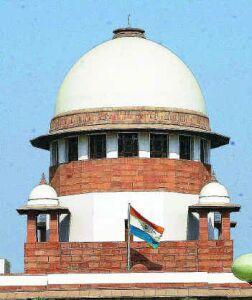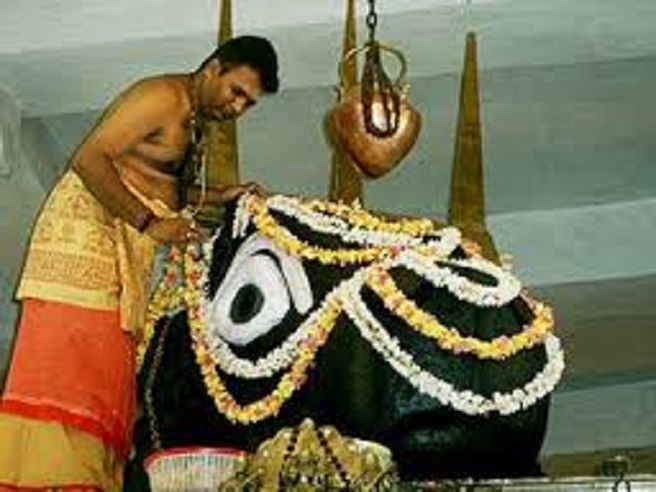In the first two parts of this series, I had examined the question of whether the rights of religious institutions under Article 26 of the Constitution may be interfered with by the State, and answered the question in the affirmative based on a combined reading of Articles 25 and 26, and the decisions of the Supreme Court on the issue.
 Before I could write a third part on the degree of permissible Statist interference with Hindu religious rights, fortuitously on December 16, 2015 the Supreme Court pronounced its verdict on the validity of a Government Order (GO) issued by the Endowments Department of the Government of Tamil Nadu on May 23, 2006 under which any person, who is a Hindu with the requisite qualification and training, may be appointed as an Archaka/priest in Hindu temples. This GO was challenged in the Supreme Court by Archakas of the Madurai Meenakshi Amman Temple.
Before I could write a third part on the degree of permissible Statist interference with Hindu religious rights, fortuitously on December 16, 2015 the Supreme Court pronounced its verdict on the validity of a Government Order (GO) issued by the Endowments Department of the Government of Tamil Nadu on May 23, 2006 under which any person, who is a Hindu with the requisite qualification and training, may be appointed as an Archaka/priest in Hindu temples. This GO was challenged in the Supreme Court by Archakas of the Madurai Meenakshi Amman Temple.
The Supreme Court’s reasoning and findings may be summarized, in a nutshell, as follows:
- On the issue of locus or the right of the priests to challenge the GO, in Paragraph 10 of the decision, the Supreme Court held that since the issues raised in the petition concerned “the religious faith and practice of a large number of citizens of the country and raised claims of century old traditions and usage having the force of law”, the petitioners had the right to challenge the GO. This is significant because it allows concerned individuals to question and challenge any arbitrary or motivated decision which has a bearing on the practice of their religion.
- In Paragraph 36, the Supreme Court reiterated the view that the right of every religious denomination under Article 26(b) to manage its own affairs insofar as matters of religion are concerned, is subject to public order, morality and health and such laws as may be made by the State under Article 25(2)(b) to provide for social welfare and reforms or throwing or proposing to throw open Hindu religious institutions of a public character to all classes and sections of Hindus.
- The Court further reiterated the well-settled legal position that whether a religious practice of a group or denomination is a fundamental or essential part of the practice of its faith shall be determined by a Constitutional Court. In the Court’s own words, constitutional legitimacy must supersede all religious beliefs or practices. However, the Court also observed that in deciding the issue, the judiciary must exercise its power with restraint.
- Interpreting Article 16(5) of the Constitution, the Court held that the said provision envisages application of the scriptures, in particular the Agamas, not only in relation to administrative appointments in religious institutions, but also to appointment to an office which requires performance of a religious function, such as Archakas. In other words, the Constitution itself attaches importance to adherence to religious laws in relation to the functioning of religious institutions to the extent it is possible to do so within the framework of the Constitution.
- According to the Court, in assessing whether a rule prescribed by Agamas in relation to religious practices violates the proscription against untouchability under Article 17 of the Constitution, it must be ascertained whether the Agama is premised on discrimination on the basis of caste, birth or pedigree. If the Agama is not premised on such discrimination, it cannot be held as contravening Article 17 of the Constitution. Consequently, by virtue of Article 16(5), the Agama must prevail and be given effect to. Therefore, the exclusion of some and inclusion of a particular segment or denomination for appointment as Archakas would not violate Article 14 so long such inclusion/exclusion is not based on the criteria of caste, birth or any other constitutionally unacceptable parameter.
Applying the above reasoning, the Court held that so long as the prescription under a particular Agama prescribed for a temple of a particular religious denomination is not contrary to any constitutional mandate, the blanket mandate of the GO cannot prevail over or supersede the prescription of the Agama. Conversely, should an Agama run afoul of the Constitution by excluding an individual on the basis of caste, birth or pedigree, the GO would prevail. Therefore, the constitutional validity of an Agama and consequently the application of the GO would need to be examined with respect to the Agamas prescribed for each religious denomination. Simply put, the issue is far from over and will need to be addressed in the facts and circumstances of each Agama as and when the issue arises during future appointment of Archakas.
In light of this, it may not be right to jump to the peremptory conclusion that the Supreme Court has struck down the GO for being constitutionally invalid. Instead, the Supreme Court has adopted a more nuanced approach which strikes a balance between preserving the rights of religious institutions to manage their own affairs in matters of religion and the duty cast on the State to prevent discrimination on grounds of caste, birth or pedigree.
In arriving at its conclusion with respect to the GO, the Supreme Court discussed two other landmark decisions, namely Seshammal and Others, Etc. Etc. vs. State of Tamil Nadu, and N. Adhithyan vs. Travancore Devaswom Board and Others. In the next part, I will review these decisions since our understanding of the rights of Hindu religious institutions would be incomplete without making sense of these decisions.
To be continued
J. Sai Deepak is a Delhi-based litigator who practises primarily before the Delhi High Court. Sai writes on economic laws and policy on his blog “The Demanding Mistress” http://thedemandingmistress.blogspot.in/. He is @jsaideepak on Twitter.

